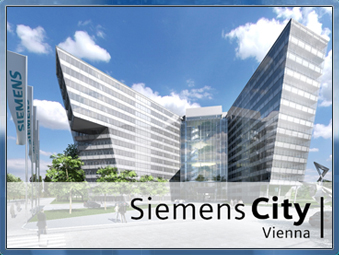There's a next Silicon Valley being built right in our backyard. According to the numerous promises soon there will be one of the biggest technology (and a whole lot more) cluster in the world and Bill Gates drinking a Hungarian wine in one of the cellars in Etyek will be a regular sight.
Zsámbék - which was mostly famous for it's historical church - now will be the heart of innovation. So how can this nearly miraculous thing can happen? Well, all started off when Sándor Kenyeres started the Talentis Program in 2003 to enhance the exploitation of human capital in the region and to make the talented young people stay and flourish in Hungary. Of course the socialist-liberal government fully supported the idea and it's one of the few issues that is supported across governments - I guess everyone loves to hear that Hungary will be the leader in a certain field. What happened since then? Not much. But there's one question that's bothering me: why this project needs the financial support of the government? If the cluster is really a good investment, why won't the consumers privately invest to it...?
Let's take a look what does economic geography tells us about making such a cluster. To be successful we'll
need the following ingredients: Venture capital, Critical mass, Anchor firm(s), Social capital, Diversity, Appropriate Demand conditions. So what can a government do? It can't be a venture capitalist, since it's risk-averse and does a bad job. It can't be anchor firm either. And it can't influence the other points directly.
What it can do is to make indirect interventions or little nudges: enhance R&D, make the firms negotiate with each other, support universities and so on. An article made up a witty analogy: the government is the owner of a shell-farm and she wants to produces pearls. Now to make a pearls she needs just a small dirt to get into a shell, so the shell can begin to create beautiful pearls. Since we're talking about business, the bulk of the process is made by firms whom - just like a shell - can create value outside the clusters too. But if we run a mussel feeding company - under the title of a shell farm - we won't have pearls.
"Okay-okay, I get it" you might say "But most of the time theory tells us a lot of contradicting implications. What can we say about reality?" First, let's take a closer look at Silicon Valley in California. The major force behind it's development was Stanford University. Stanford University started out as an engineer school and dean of the engineering in the 1940's and 1950's encouraged the graduate students to start their own companies. This encouragement lead to companies today known as Hewlett-Packard, Varian Associates among other high-tech firms (note: they didn't get any state-subsidized loan for the start-up). And then slowly but steadily the whole region grew into the world's most innovative areas, which gave us the Internet, Google, the semiconductor chip, and the microprocessor. Today one-third of all the venture capital investments in the US happens in this small region. As you can see this cluster was entirely privately funded.
But we don't have to go that far to examine successful science parks. Cambridge Science Park is located in the UK near to University of Cambridge. It was a rural area until in the October of 1971 Laser-Scan, the first company moved into the region. Then the area started develop slowly as more companies joined the park. Notice that there were no direct state interventions, just the University of Cambridge promoted the park in the late '80's and the beginning of the '90's. All of the companies came here just to do business and not because the government gave away subsidies or such.
So the bottom-line of my whole argument is that we should be at least skeptical about this 'Hungarian Silicon Valley'. As you can see both of these examples had famous, research-intensive universities from the start. How many famous, research intensive universities we have in Zsámbék? None. How many research institutions we have in Zsámbék? Zero. Also, the development of both of these clusters were very slow, we can't just hurry the whole thing. And if one needs the direct intervention of the state (and not just small nudges), then something isn't right. Government has it's comparative advantages, but none in business.
That's the job of the private sector.
Balázs Stadler



















